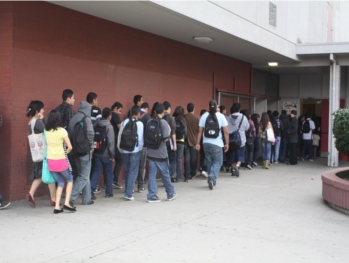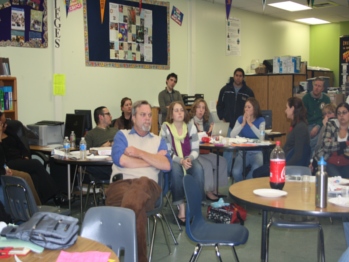This is the second of eight write-ups from freshman students at Manual Arts High School. Some participated in weeks-long projects about animal abuse, drugs, gangs, prostitution and racism. Part of their projects included surveys they created for their communities. After they gathered information, all of the groups presented their findings at a school presentation. Two days later, each group wrote about their experiences during an Intersections: The South Los Angeles Report mentoring and writing workshop.
We chose racism because it is very interesting to us. It is an issue and problem we wanted to discuss and look up. We studied and searched websites, articles and documents. We found and discovered many things.
Our group learned that racism is very familiar to people and it exists in our community. We surveyed many classes and students, and we interviewed five people, including an English teacher, a physical education teacher, a coordinator and an assistant dean.
Everyone we interviewed felt the same way we did. We all feel that racism is a problem that needs to be dealt with. This problem will not change or stop if we do not work together to make a difference. We think that if everyone works together and resolves their issues, we will succeed.
Our group also thinks racism most likely comes from pure ignorance. Ignorance is the cause of racism because people who are racist do not realize that racism just brings more problems and violence in our community and world.
Racism can negatively affect you and everyone around it. It can start problems and create violence. Race itself can stop you from getting or keeping a job. We believe you should earn your job based on your hard work, experience and loyalty, rather than your race. Most importantly, race can keep you from having a nice, soothing and joyful life, but that is not okay.









 By Erdavria Simpson, Hamilton High School
By Erdavria Simpson, Hamilton High School By Mariela Martinez
By Mariela Martinez By Susana Valencia
By Susana Valencia By Gisela Alvarez
By Gisela Alvarez




